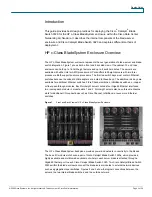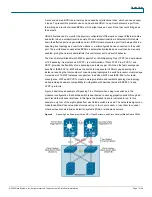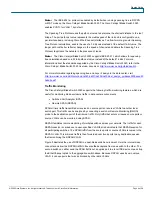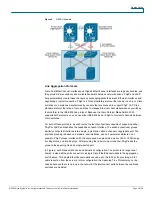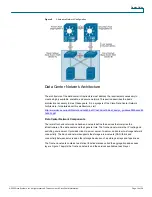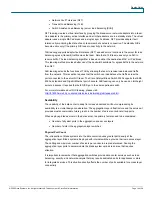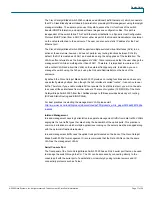
Design Guide
© 2008 Cisco Systems, Inc. All rights reserved. This document is Cisco Public Information.
Page 6 of 28
Cisco Catalyst Blade Switch 3020 Features
This section highlights information about the protocols and features provided by the Cisco Catalyst
Blade Switch 3020 that help integrate the HP c-Class BladeSystem enclosure into the Cisco Data
Center Network Architecture.
Spanning Tree
The Cisco Catalyst Blade Switch 3020 supports different versions of the Spanning Tree Protocol
and associated features, including the following:
●
Rapid Spanning Tree Protocol (RSTP), based on IEEE 802.1w
●
Multiple Spanning Tree (MST), based on IEEE 802.1s (and includes IEEE 802.1w support)
●
PVST+
●
Rapid PVST+ (RPVST+)
●
Loop Guard
●
UDLD
●
BPDU Guard
●
PortFast
●
UplinkFast (Cisco proprietary enhancement for IEEE 802.1d deployments)
●
BackboneFast (Cisco proprietary enhancement for IEEE 802.1d deployments)
The IEEE 802.1w protocol is the standard for rapid spanning tree convergence, whereas IEEE
802.1s is the standard for multiple spanning-tree instances. Support for these protocols is essential
in a server-farm environment for allowing rapid Layer 2 convergence after a failure occurs in the
primary path. The primary benefits of IEEE 802.1w include the following:
●
The spanning-tree topology converges quickly after a switch or link failure.
●
Convergence is accelerated by a handshake, known as the proposal agreement
mechanism.
Note:
The user need not enable PortFast, BackboneFast, or UplinkFast if running RSTP.
In terms of convergence, Spanning Tree Protocol algorithms based on IEEE 802.1w are much
faster than the traditional Spanning Tree Protocol IEEE 802.1d algorithms. The proposal
agreement mechanism allows the Cisco Catalyst Blade Switch 3020 to decide new port roles by
exchanging proposals with its neighbors.
With IEEE 802.1w, as with other versions of the Spanning Tree Protocol, BPDUs are sent by
default every 2 seconds (called the hello time). If three BPDUs are missed, Spanning Tree Protocol
recalculates the topology, a process that takes less than 1 second for IEEE 802.1w.
Because the data center is made of point-to-point links, the only failures are physical failures of the
networking devices or links. The IEEE 802.1w protocol can actively confirm that a port can safely
transition to forwarding without relying on any timer configuration, meaning that the actual
convergence time is less than 1 second.



